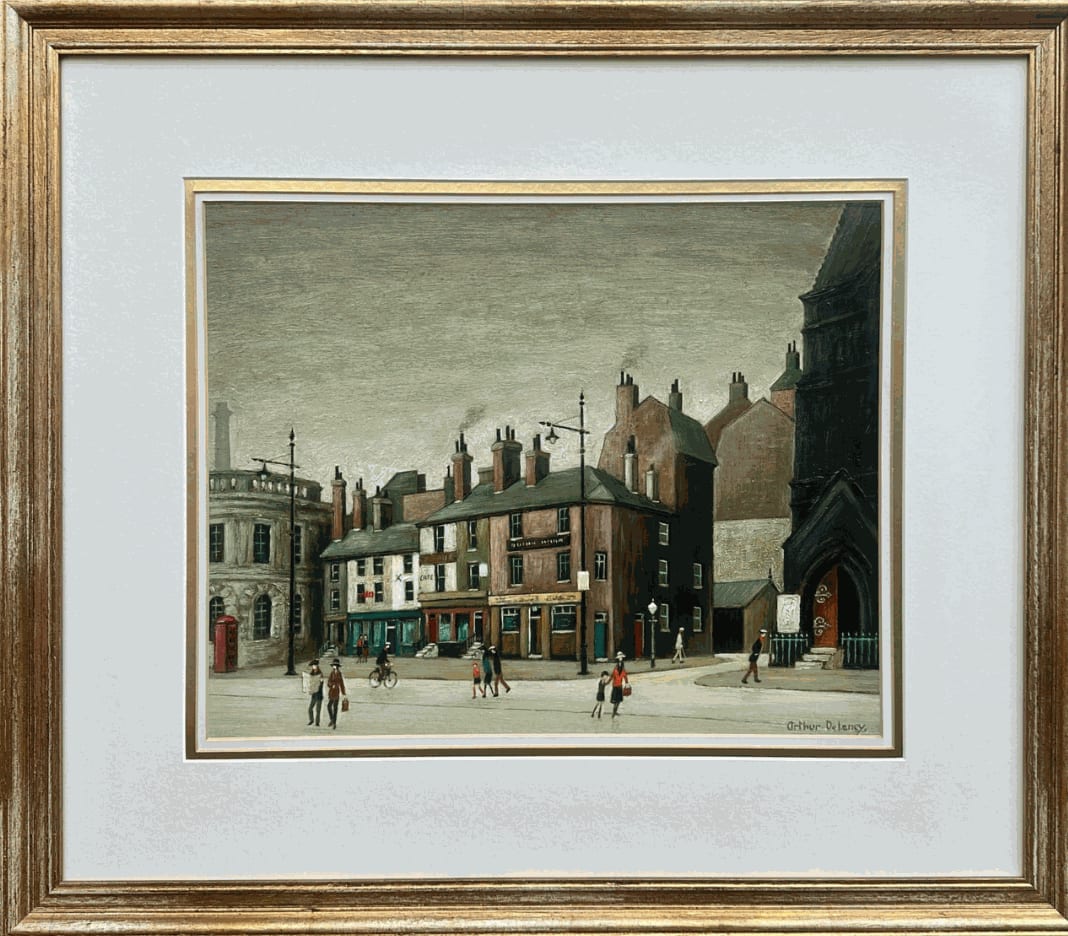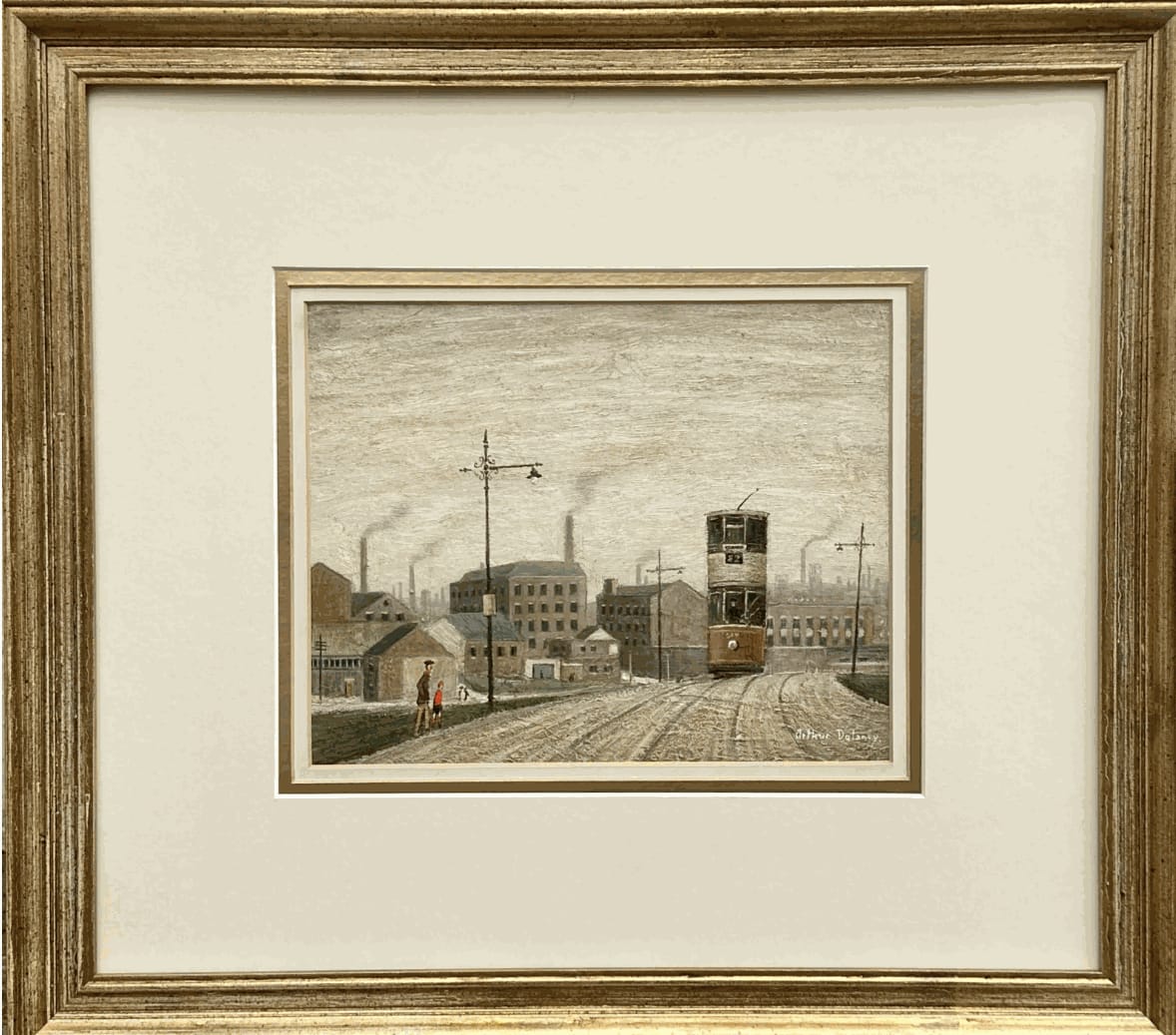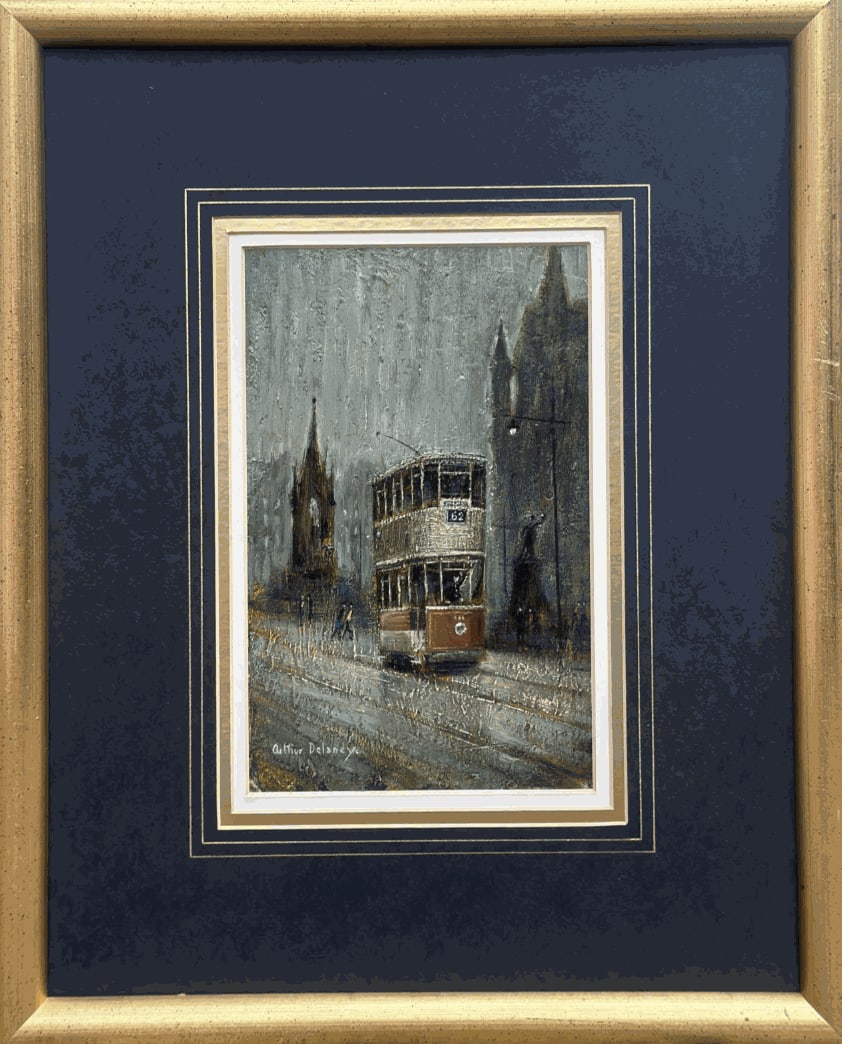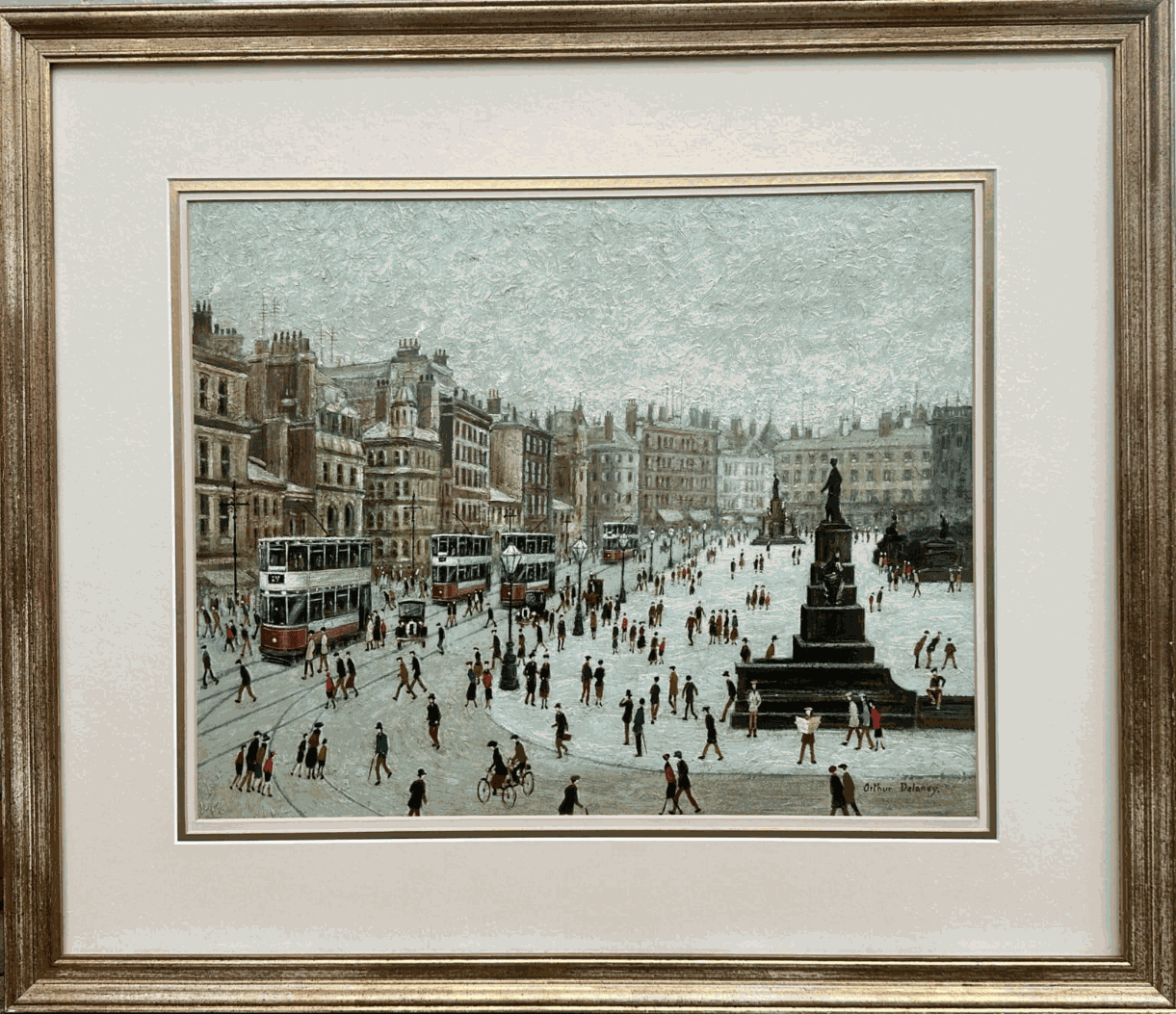It’s hard not to feel something when looking at Arthur Delaney’s paintings. His scenes, often soaked in drizzle and nostalgia, give shape to a version of Manchester that’s both familiar and fading. As a Manchester industrial artist, Delaney captured far more than buildings or buses — he painted memory itself.
Streets lined with chimneys, wet cobbles gleaming beneath sodium lights, and people small yet certain within the smog. His work, quietly evocative, continues to speak to those who remember the city that once was, and to those who wish they had.
Introducing Arthur Delaney
Arthur Delaney was born in Manchester in 1927, right into the smoke and bustle he’d later capture so vividly. He wasn’t formally trained in art, yet his eye for storytelling through painting stood out early. By the time he began painting seriously in his thirties, Delaney had already lived through war, post-war reconstruction, and the slow, stubborn evolution of his hometown. What makes him remarkable isn’t just his style, it’s his memory. Every Arthur Delaney painting is filtered through lived experience.
His early work gained attention for its similarity to L.S. Lowry’s, though Delaney brought something softer, more reflective. His career, while relatively quiet, grew steadily through local exhibitions and word-of-mouth. Today, his paintings are held in both private collections and galleries like Contemporary Six, where interest in his work continues to grow.
Growing Up in Industrial Manchester

Arthur Delaney’s childhood was steeped in soot, steam, and factory shifts. Not from stories, but from the streets just outside his front door. Born in the working-class districts of Manchester, he grew up surrounded by mills, tramlines, and brick terraces that shaped how he saw the world. In that sense, he wasn’t just painting buildings, he was painting his neighbours, the daily rhythms of wet pavements and clattering wheels. It’s this rootedness that gives his work such quiet confidence.
As a Manchester industrial artist, he didn’t need to guess what industrial Britain looked like he had lived it. The industrial skyline, so often harsh in tone, becomes something almost gentle in Delaney’s hands. His urban Manchester art doesn’t romanticise poverty, yet it often leans into memory, into how a place can feel once it’s passed. In a way, every canvas was a step back through streets that no longer stood.
Artistic Influences and Inspirations

Arthur Delaney was, inevitably, compared to L.S. Lowry — a fellow Mancunian and, in many respects, a mentor figure. Delaney admired Lowry’s ability to elevate the everyday, to turn factory life into something near-mythic. That influence is clear, especially in early works: simplified figures, flattened perspectives, and smoky skies. Yet, where Lowry’s people often feel distant or schematic, Delaney’s tend to carry warmth, like someone remembering rather than recording.
As a Lowry-inspired artist, he never copied. Instead, he reshaped that influence through his own past, creating scenes filled with emotion and familiarity. He captured working-class life paintings that UK viewers recognised, not because they were grand or dramatic, but because they were utterly ordinary. In doing so, he carved out his own lane. Not quite as stark as Lowry, nor as sentimental as others but firmly anchored in the stories of the street, and the pride of place.
Capturing the City: Themes in Delaney’s Work

Look closely at any Arthur Delaney painting and you’ll find layers of memory stacked between the bricks. His subjects, trams edging through drizzle, chimney stacks hemming the skyline, children bundled in coats near corner shops, rarely changed. But the feeling behind them always did. He painted with a kind of British nostalgia art that’s more about atmosphere than accuracy. His was a Manchester not bound by dates or geography, but by how things felt: the orange glow of streetlamps on wet tarmac, the quiet rhythm of factory workers moving through fog.
These were Northern cityscapes with heart, built not from architectural studies, but from half-remembered moments. His urban Manchester art leans heavily into community, not crowds, but small human details. Families, neighbours, solitary figures; each figure a stand-in for someone remembered. It’s this emotional undercurrent that sets his work apart. In showing us a city’s old bones, Delaney reminds us of its spirit.
Style, Technique and Colour Choices

Arthur Delaney’s paintings often begin in grey, but they never stay there. His palette, though muted, holds an unexpected warmth. Ochres, browns, deep reds, and smoky blues give his scenes an earthy weight, but also a strange softness. Unlike more rigid depictions of industrial Britain in art, Delaney’s brushwork has a loose, almost impressionistic quality. Figures are suggested more than drawn. Rain glistens rather than falls. Trams appear to hum through the canvas. It’s this blend of memory and motion that defines his style.
Compositionally, he often pulled the viewer along narrow streets or opened up onto smoky junctions, always keeping the human scale intact. Nothing ever feels too grand, instead, every detail, from lamplight reflections to rooftops smudged by smog, seems considered. That said, nothing about it feels overly precise. His technique, in a way, mirrors recollection itself, slightly blurred, a bit uneven, and completely believable.
Reception and Recognition
Though Arthur Delaney never courted fame, his paintings found loyal admirers. From early local exhibitions to growing collector interest in later years, his work struck a chord with those who saw something of themselves in it. Viewers connected with the quiet dignity of his subjects and the emotional texture woven through each scene. He wasn’t loud, but his art spoke plainly and people listened.
Today, Arthur Delaney paintings remain popular among collectors who value authenticity and regional character. His work regularly features in respected galleries and is available through Contemporary Six, where a new generation of buyers and enthusiasts continues to discover the depth in his streetscapes. His audience, like his art, has grown steadily and with good reason.
Arthur Delaney’s Place in British Art
Arthur Delaney may not dominate textbooks, but his place in British visual history is secure. Among Northern cityscapes painters, he occupies a space that balances realism with recollection — never too abstract, never too neat. His paintings serve not only as artistic expressions but as cultural records of a Manchester many remember and others wish they’d known. Compared with his contemporaries, Delaney’s work feels more inward, more personal and that’s where its power lies. He didn’t just paint streets, he painted how they felt to live in.
That contribution, subtle as it might seem, gives his work lasting value. For collectors drawn to British nostalgia art or interested in working-class life paintings UK, Delaney offers something rare: memory made visible. To enquire about available works or view pieces in person, contact us at Contemporary Six.
